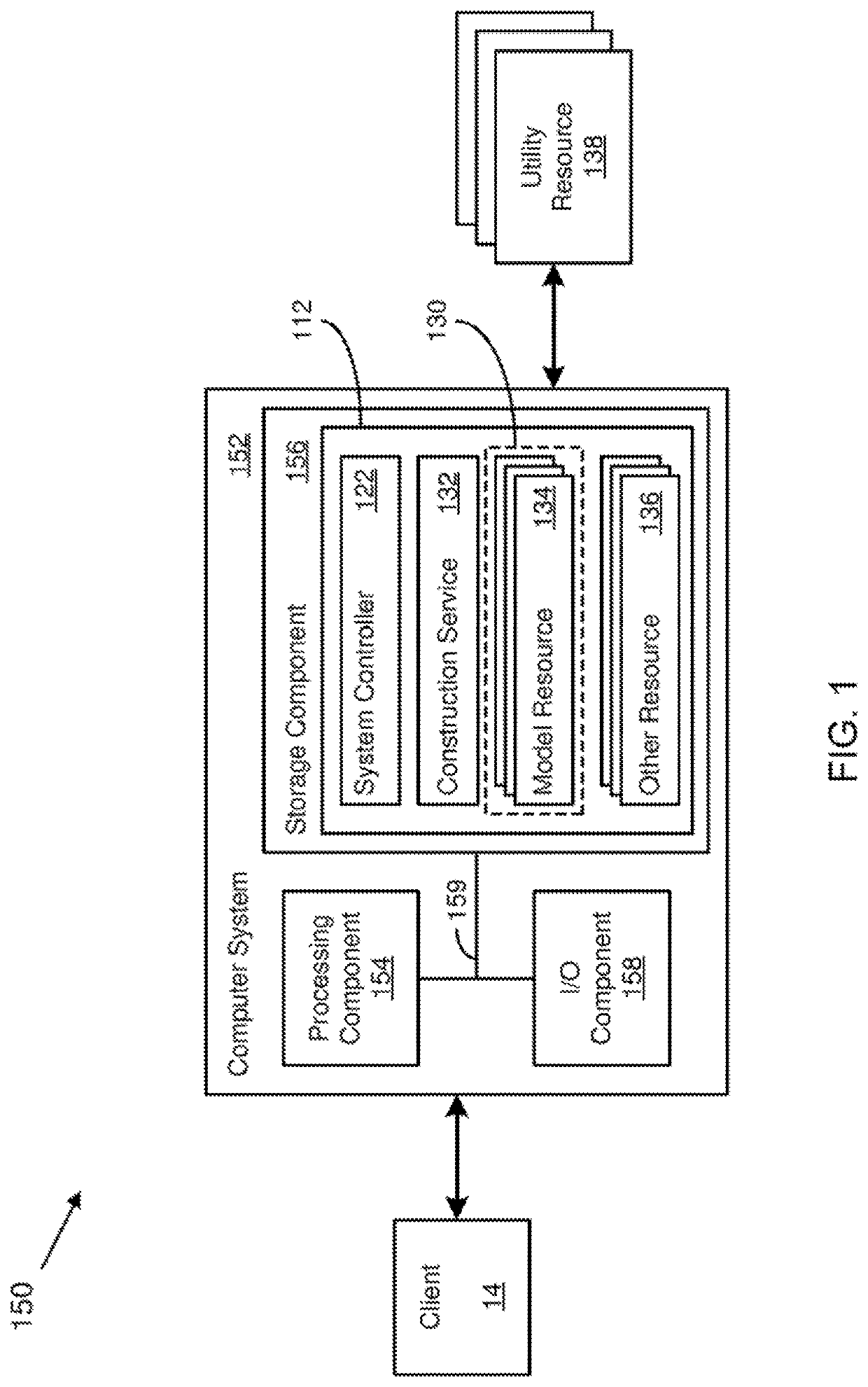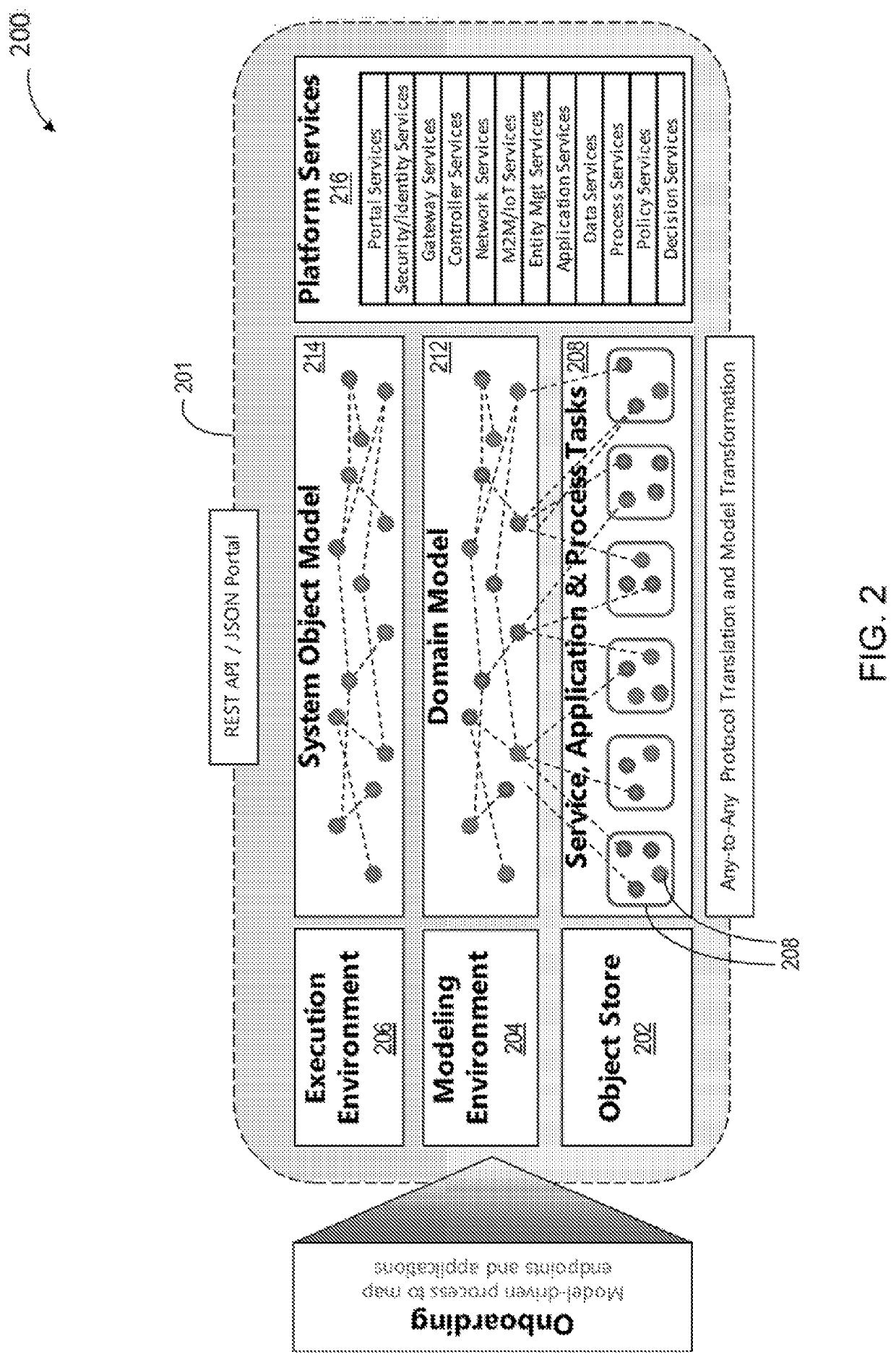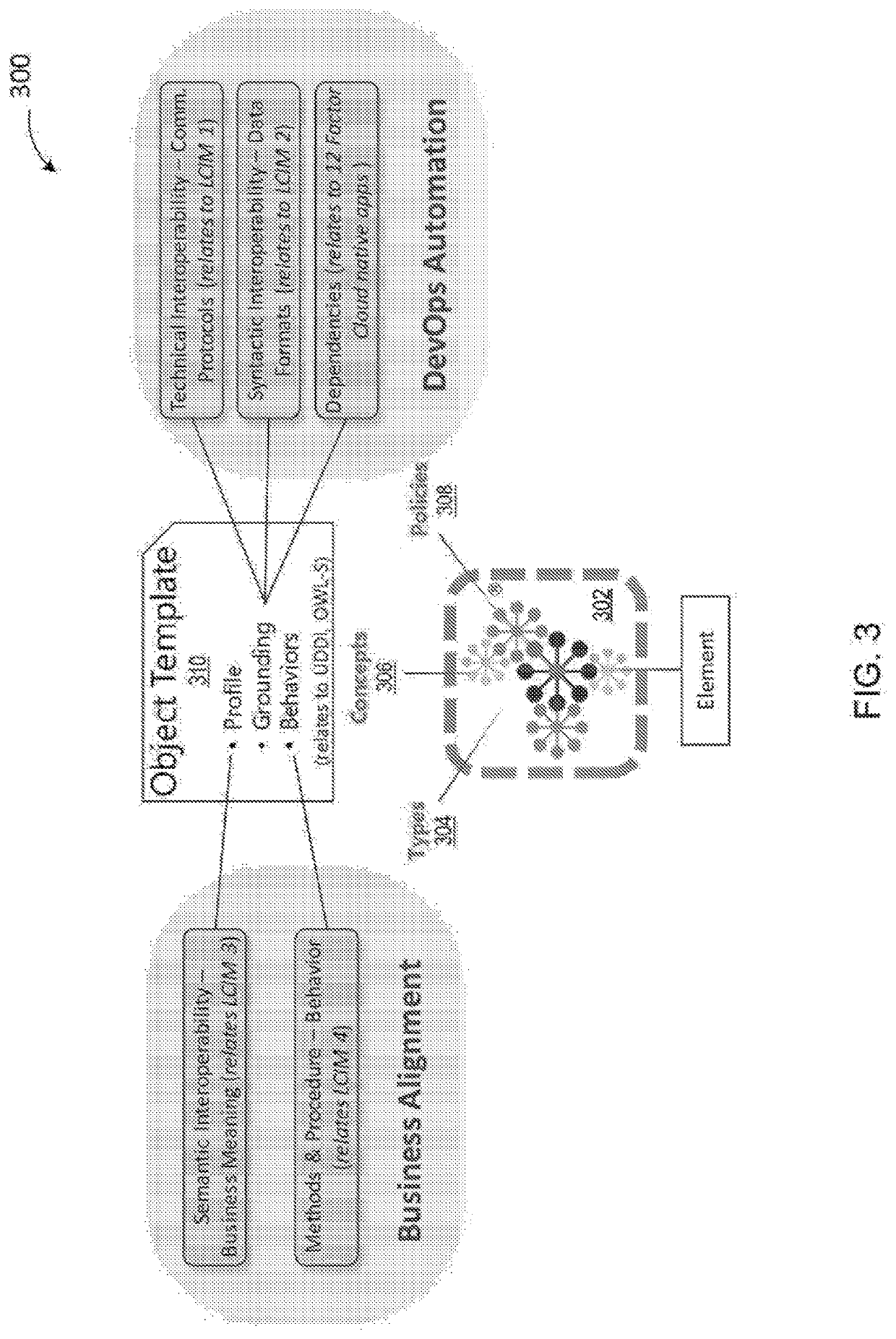Graph knowledge base for modeling and processing stateful cloud-native applications
a graph knowledge and stateful technology, applied in the direction of transmission, electrical equipment, etc., can solve the problems of limiting process responsiveness, limiting the exploitation of contextually relevant resources, and individual or system working in isolation prone to return suboptimal outputs, etc., to simplify test and debug operations and run-time observability
- Summary
- Abstract
- Description
- Claims
- Application Information
AI Technical Summary
Benefits of technology
Problems solved by technology
Method used
Image
Examples
examples and example implementations
[0373]
Application and ComputingVIM AdaptorResourcesSDN Controller AdaptorEach is onboard to the systemvFW VNF Packageusing a model-based process:IMS VNF Packagemapping properties / behaviors toEPC VNF Packagethe metamodel, and definingvProbe VNF Packagestandards-based LCM operations.vMonitor VNF PackageSecure Traffic Domain InterfaceIMS Domain InterfaceEPC Domain InterfaceResource Monitor InterfaceService Monitor InterfaceMicro-capabilitiesService Orchestration Functions (Calculate OptimizedSet of business / IT functions andDeployment Plan, Coordinate Actors, Routemiddleware / platform servicesEvents / Messages)enabling the set ofVIM interface (Instantiate VM / VDU, Terminate VM / VDU,desired / necessary operations overScale VM / VDU, etc.)other objects to connect,VNFM interface (Deploy VNF, Start VNF, Stop VNF, etc.)configure, control, coordinate.Domain interface (Deploy VNF / Service, Start VNF / Service,Stop VNF / Service, etc.)Product Order interface (List Products, Get Product Spec,Place Order, etc....
PUM
 Login to View More
Login to View More Abstract
Description
Claims
Application Information
 Login to View More
Login to View More - R&D
- Intellectual Property
- Life Sciences
- Materials
- Tech Scout
- Unparalleled Data Quality
- Higher Quality Content
- 60% Fewer Hallucinations
Browse by: Latest US Patents, China's latest patents, Technical Efficacy Thesaurus, Application Domain, Technology Topic, Popular Technical Reports.
© 2025 PatSnap. All rights reserved.Legal|Privacy policy|Modern Slavery Act Transparency Statement|Sitemap|About US| Contact US: help@patsnap.com



